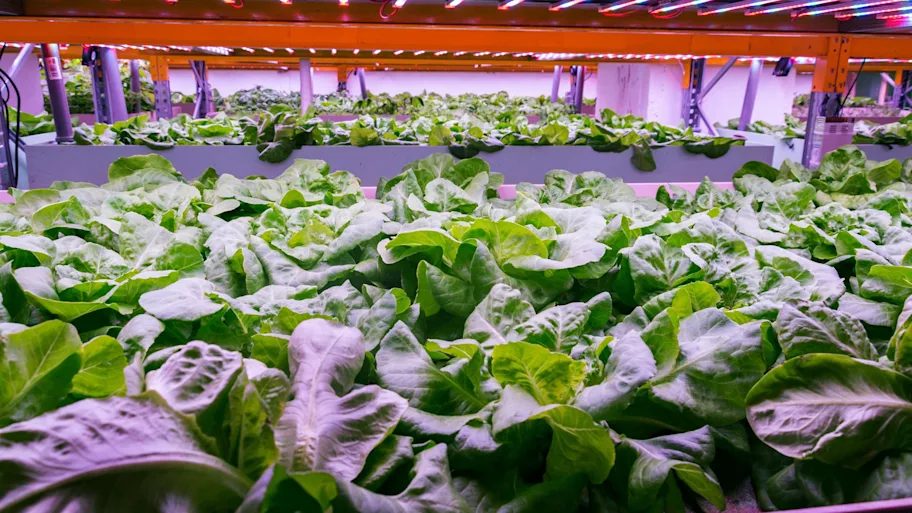
- Science news
- Sustainability
- Corn yield modeling towards sustainable agriculture
Corn yield modeling towards sustainable agriculture

U__sing crop models as a tool to assist nitrogen management decisions in corn as a win-win for the agronomy business and the environment
— By Kate E. Larkin —
With an innovative modeling approach, researchers set out to examine corn and soybean yields and optimal nitrogen (N) fertilizer rates. In their study, recently published in Frontiers in Plant Science, they uses a 16-year long-term dataset from central Iowa, USA, with a state-of-the-art simulator that modeled corn and soybean yields, improving predictions of optimal N fertilizer rates for corn. This has global relevance for food security and sustainable agricultural practices in light of future climate change scenarios.
Corn, also known as maize, is one of the top three staple crops farmed globally with global production predicted to rise from 720.8 million tons in 2015 to 872.9 by 2030, according to the Food and Agriculture Organization. Corn also requires large nutrient supplements in the form of fertilizer due to its fast-growing, nitrogen hungry characteristics. And global demand is growing.
“A huge challenge in agriculture is predicting the optimal N fertilizer rates which, if fine-tuned, can reduce N losses and increase profits”, explains Laila Puntel, a graduate student and research assistant in Crop Production and Physiology at Iowa State University, USA, and lead author of the study.
The ultimate goal is accurately predicting the economic optimum nitrogen rate (EONR), the amount of nitrogen fertilizer that will provide the maximum economic return to nitrogen added. This is notoriously complex to calculate due to factors including the soil-plant-atmosphere system, uncertainty in weather and fluctuations in crop and fertilizer prices.

Lead author of the study, Laila Puntel, undertaking field work in corn crop production in Midwest USA. Image granted by Laila Puntel.
Lead author of the study, Laila Puntel, undertaking field work in corn crop production in Midwest USA. Image granted by Laila Puntel.
To solve this conundrum, many technologies and approaches have been developed to assess the state of agricultural land. These include real-time remote sensing, aerial imaging, soil mapping and nitrate testing, crop canopy sensing and measuring chlorophyll levels. Web applications have also been developed including digital soil and weather databases.
However, no single technology can make predictions of yield or optimal N fertilizer rates with the required accuracy or precision.
Puntel and her international co-authors tackled this problem head on, designing an inter-disciplinary approach using field and experimental data. These data were used to test the Agricultural Production Systems sIMulator (APSIM), an internationally recognized highly advanced simulator of agricultural systems.
“We found that long-term experimental data incorporating agricultural, economic and environmental factors are valuable in testing and refining the APSIM model predictions, leading to more accurate predictions of EONR” says co-author Dr. Sotirios Archontoulis, Assistant Professor in the Department of Agronomy at Iowa State University, USA.
Archontoulis continues “The study results show that predictions of N fertilizer rates for corn are more accurate when inter-annual variability is taken into account. Site-specific datasets on variables such as landscape factors, weather and prices for fertilizers and crops are also key to achieving the best results.”
The study identifies five potential applications where the model could assist N management, ranging from simulation of N dynamics to climate change impact on optimal N requirement. It also found that optimum N rate was high for corn production alone, but could be reduced by rotating the corn with soybean.

Corn field Nitrogen fertilizer supplements (white balls) in Midwest USA. Image granted by Laila Puntel.
The study is timely as environmental concerns are very real and increasing. Excess nutrients such as nitrogen and phosphorus enter the water cycle via surface run-off, leaching or denitrification. This contaminates water systems and can also promote algal growth in water systems which can be toxic, damaging fisheries.
“The study shows that using a combination of methods including process-based modeling, existing N rates and field data really can fine-tune N rate guidance for corn. Ultimately, reducing the use of nitrogen fertilizer is a win-win for the agricultural business and the environment.” concludes Puntel.
This work was part of the Agriculture and Food Research Initiative Hatch project No. 1004346 and was also partially supported by the Plant Science Institute, and the Brown Graduate Fellowship program of Iowa State University.
Citation: Puntel LA, Sawyer JE, Barker DW, Dietzel R, Poffenbarger H, Castellano MJ, Moore KJ, Thorburn P and Archontoulis SV (2016) Modeling Long-Term Corn Yield Response to Nitrogen Rate and Crop Rotation. Front. Plant Sci. 7:1630. doi: 10.3389/fpls.2016.01630
http://journal.frontiersin.org/article/10.3389/fpls.2016.01630/full






